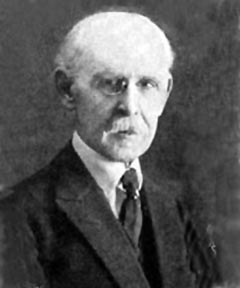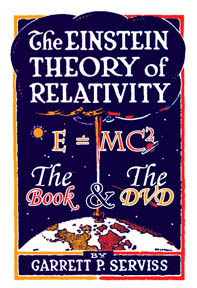To contact us email here | For most of the last hundred years Einsteinís Theory of Relativity has symbolized the pinnacle of human conception. Thanks mostly to a journalist who couldnít be bothered to investigate his story; most people were led to believe that the famous theory was only comprehensible to a handful of brilliant physicists. Nothing could be further from the truth, but back when this book was written this intimidating baggage had already been placed aboard Einsteinís wagon. The movie was long believed to have passed on to that place where old nitrate movies go to die. A victim of a primitive evanescent technology. But it does still exist, and it holds a special place in the history of cinema. It first screened on February 11th 1923. An amazing first for this movie is that it has a "rocket-driven" space launch depicted, this is six years before Frau Im Mond. This is three years before Goddard's first successful liquid launch and about eight years before the Germans launched one. The "astronaut" is also depicted putting on breathing apparatus.The only thing which seems to effectively precede this is HG Wells First Men in the Moon which came out as a movie in 1919 but they didn't use any kind of rocket or spacesuits, even on the moon. Its companion piece, Evolution, also includes truly incredible animation of the formation of the solar system decades before the famous Film Board of Canada short Universe, attracted the eye of Stanley Kubrick for his upcoming space epic 2001 A Space Odyssey. The stop-motion dinosaurs were contrived by Willis OíBrien who went on to do King Kong ten years later. The astronaut in Relativity is a sight to behold.The studio that produced these most esoteric movies was none other than Max Fleischerís Out-of-the-Inkwell; famous for Betty Boop and Popeye. This combination of book and movie have not seen the light of day in over 80 years. Even though there are facets of both which could now stand some factual revision, they represent a brilliant opportunity to look back on a time when artists and scientists were not afraid to popularize the most profound subjects for the general public using little more than imagination and hard work. And donít forget this was three decades before Disneyís man in space movies! | Comes with DVD! OUT OF STOCK Go to Item #97 on the shopping cart.ISBN 9781926837079 |
 | Garrett Serviss was a well known astronomer, born March 24th 1851 in Sharon Springs New York he graduated from Cornell University in 1872. He then turned to law and was admitted to the bar in 1874 but, like so many of his predecessors with a fascination for space, he turned away from a law career and spent much of his life as a writer of fiction and science journalism. By 1888 he had written his first serious work of non-fiction called Astronomy with an Opera Glass, much later in life he would be the first to write a popularization of Albert Einsteinís theory of relativity, this short book would even be made into a hit motion picture explaining the intricacies of Einsteinís revolutionary theory. In 1898 Serviss added to his already burgeoning reputation by contributing a sequel to H.G. Wellsí famous tale of interplanetary war, The War of the Worlds. The sequel was called Edisonís Conquest of Mars. Serviss would continue to attract new readers over the next two decades and would become one of the most highly respected science and science fiction authors of his era. His later novel The Second Deluge would be recognized as one of the greatest works of its type. |

